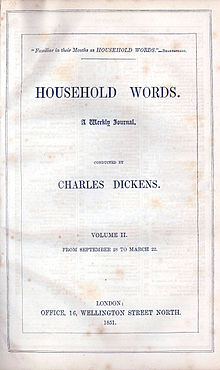
William Makepeace Thackeray was a British novelist, author and illustrator. He is known for his satirical works, particularly his 1848 novel Vanity Fair, a panoramic portrait of British society, and the 1844 novel The Luck of Barry Lyndon, which was adapted for a 1975 film by Stanley Kubrick.

Elizabeth Cleghorn Gaskell, often referred to as Mrs Gaskell, was an English novelist, biographer and short story writer. Her novels offer a detailed portrait of the lives of many strata of Victorian society, including the very poor. Her work is of interest to social historians as well as readers of literature. Her first novel, Mary Barton, was published in 1848. Gaskell's The Life of Charlotte Brontë, published in 1857, was the first biography of Charlotte Brontë. In this biography, she wrote only of the moral, sophisticated things in Brontë's life; the rest she omitted, deciding certain, more salacious aspects were better kept hidden. Among Gaskell's best known novels are Cranford (1851–1853), North and South (1854–55), and Wives and Daughters (1865), all having been adapted for television by the BBC.

William Wilkie Collins was an English novelist and playwright known especially for The Woman in White (1859), a mystery novel and early "sensation novel", and for The Moonstone (1868), which, after Poe's story, Murders in the Rue Morgue, has been proposed as the first modern English detective novel.
This article contains information about the literary events and publications of 1857.
This article contains information about the literary events and publications of 1854.

All the Year Round was a Victorian periodical, being a British weekly literary magazine founded and owned by Charles Dickens, published between 1859 and 1895 throughout the United Kingdom. Edited by Dickens, it was the direct successor to his previous publication Household Words, abandoned due to differences with his former publisher.

The Cornhill Magazine (1860–1975) was a monthly Victorian magazine and literary journal named after the street address of the founding publisher Smith, Elder & Co. at 65 Cornhill in London. In the 1860s, under the editorship of William Makepeace Thackeray, the paper's large circulation peaked around 110,000. Due to emerging competitors, circulation fell to 20,000 by 1870. The following year, Leslie Stephen took over as editor. When Stephen left in 1882, circulation had further fallen to 12,000. The Cornhill was purchased by John Murray in 1912, and continued to publish issues until 1975.
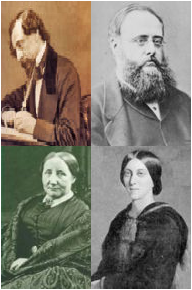
"A House to Let" is a short story by Charles Dickens, Wilkie Collins, Elizabeth Gaskell and Adelaide Anne Procter. It was originally published in 1858 in the Christmas edition of Dickens's Household Words magazine. Collins wrote the introduction and collaborated with Dickens on the second story and ending, while Gaskell and Proctor wrote the remainder.
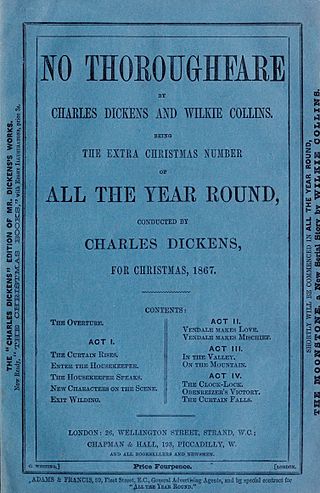
No Thoroughfare is a stage play and novel by Charles Dickens and Wilkie Collins, both released in December 1867.
The bibliography of Charles Dickens (1812–1870) includes more than a dozen major novels, many short stories, several plays, several non-fiction books, and individual essays and articles. Dickens's novels were serialized initially in weekly or monthly magazines, then reprinted in standard book formats.

The Dickens family are the descendants of John Dickens, the father of the English novelist Charles Dickens. John Dickens was a clerk in the Royal Navy Pay Office and had eight children from his marriage to Elizabeth Barrow. Their second child and eldest son was Charles Dickens, whose descendants include the novelist Monica Dickens, the writer Lucinda Dickens Hawksley and the actors Harry Lloyd and Brian Forster.

"The Haunted House" is a story series published in 1859 for the weekly periodical All the Year Round. It was "Conducted by Charles Dickens", with Charles Dickens writing the opening and closing stories, framing stories by Dickens himself and five other authors.
Harriet Parr (1828–1900) was an English author of the Victorian era, who wrote under the pseudonym Holme Lee. She also wrote stories for children.
Louisa Nottidge (1802-1858) was a British woman whose unjust detention in a lunatic asylum attracted widespread public attention in mid-19th century England. In that period several similar cases emerged in the newspapers of sane persons being incarcerated in lunatic asylums for the convenience or financial gain of their immediate families. The most prominent, other than Louisa Nottidge, was the case of Rosina Bulwer Lytton. This public fascination and anger was exploited by the writer Wilkie Collins, who published the best-selling novel The Woman in White in 1860. The case of Louisa Nottidge has remained of interest with respect to the rights of psychiatric patients, women's rights, and the conflict between freedom of religion and the legal process.
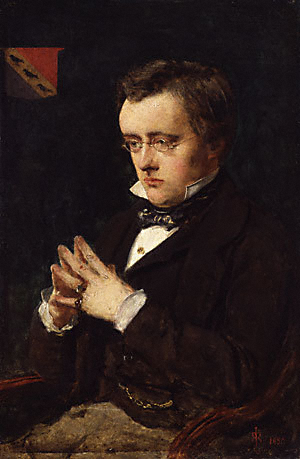
This is a bibliography of the works of Wilkie Collins.

William Henry Wills JP was a British journalist, playwright, a newspaper editor and a close friend and confidant of the author Charles Dickens, who entrusted Wills with the task of forwarding his letters to his mistress Ellen Ternan.
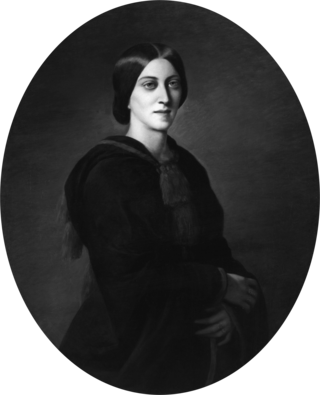
Adelaide Anne Procter was an English poet and philanthropist.
Hon. Edmund Phipps was a lawyer and author.
"The Trial for Murder" is a short story written by Charles Dickens in 1865. It was originally published under the title "To Be Taken with a Grain of Salt" as a chapter in Dr. Marigold's Prescriptions in an extra Christmas volume of the weekly literary magazine, All the Year Round. It was later published in 1866 in a collection of ghost stories known as "Three Ghost Stories", along with "The Haunted House" and "The Signal-Man".
William Duthie was a mid-19th century English goldsmith and author of prose and poetry.
